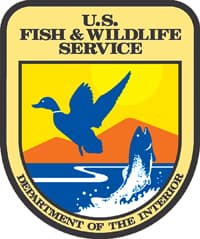Borax Lake Chub Makes a Comeback
OutdoorHub 10.01.12

Thanks to the dedicated efforts of government agencies, non-profit groups and university researchers, a tiny fish in an isolated Oregon lake is making a conservation comeback.
The Borax Lake chub is a small olive green minnow, 1.7 to 2.5 inches long, found only in Borax Lake, a 10-acre geothermally heated alkaline lake in southeastern Oregon. In 1980, the U.S. Fish and Wildlife Service provided emergency Endangered Species Act protection to the chub because the integrity of the species’ entire habitat and thus its survival were threatened by a proposed geothermal development and other modifications in and around Borax Lake.
Since then, a dedicated partnership of The Nature Conservancy, Bureau of Land Management (BLM), Oregon Department of Fish and Wildlife (ODFW), university researchers and the Service has worked with great success to protect the species and remove the threats to its survival.
“The Nature Conservancy, BLM, and ODFW have played particularly important roles in protecting and restoring habitat for the species,” said Dr. Paul Henson, State Supervisor of the Service’s Oregon Fish and Wildlife Office.
“They have accomplished this through land acquisition and management of critical habitat, protection of subsurface and surface waters, implementation of key tasks in the BLM Resource Management Plan, detailed studies and monitoring of Borax Lake and the chub.”
In 1982, when the Service issued its final rule placing the Borax Lake chub under ESA protection, the agency designated Borax Lake and 640 acres of land as critical habitat, which is habitat that is essential to the survival of the species. The Nature Conservancy purchased 320 acres of the critical habitat containing Borax Lake.
“Borax Lake and the Borax Lake Chub are unique and irreplaceable,” said Garth Fuller, the Eastern Oregon Conservation Director for The Nature Conservancy. “Great things can be accomplished when people work together.
From the landowners we purchased the property from to the agencies and researchers, it’s been a team effort. We look forward to continuing our cooperative efforts.”
In 1983, BLM designated 520 acres of BLM-administered lands around Borax Lake as an Area of Critical Environmental Concern (ACEC). The designation encompasses the remaining critical habitat, Burns District Manager Brendan Cain said, and provides important protections for the chub and its habitat.
In 2010, BLM completed the construction of a fence to protect the fragile lakeshore and important habitat from vehicle traffic. The BLM also participates in the annual population estimate performed in coordination with ODFW, TNC and USFWS.
According to Shannon Hurn, ODFW fish biologist, the agency has monitored the Borax Lake chub population and its habitat periodically since its listing and, more recently, for seven consecutive years. “The population of Borax Lake chub continues to be healthy and relatively stable within some natural fluctuation,” Hurn said.
Today, the Service released its 5-year review of the Borax Lake chub, recommending the species’ classification under the ESA be changed from endangered to threatened. An endangered species is one that is in danger of extinction in all or a significant portion of its range. A threatened species is one that is likely to become endangered within the foreseeable future throughout all or a significant portion of its range.
The recommendation reflects the significant progress that has been achieved in conserving the Borax Lake chub and its habitat. The review found that criteria for reclassifying the chub, as identified in the species’ recovery plan, had been met. The plan recommended specific recovery actions that would permanently protect the Borax Lake ecosystem, maintain the population, and research the chub’s ecology.
Although the 5-year review found that substantial progress has been made in implementing recovery actions that address primary threats to the Borax Lake chub, reviewers said threats to the species and its habitat remain.
These include the potential for geothermal energy development on nearby private lands, recreational activities along the vulnerable lake shoreline, and the potential impact of non-native species introduction to Borax Lake.
The 5-year review provides a recommendation, with supporting information, on whether the species’ ESA classification should be changed; it does not change the species’ classification. A species’ ESA classification can only be changed through a formal rulemaking process including a public review and comment period. The Service has not set a date for proposing a change in the species’ classification.
In the meantime, The Nature Conservancy, BLM, ODFW and the Service plan to continue their strong partnership work toward the recovery of the Borax Lake chub.

